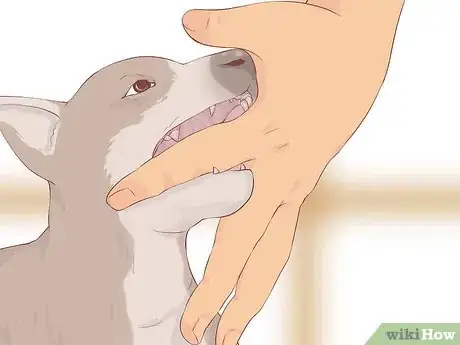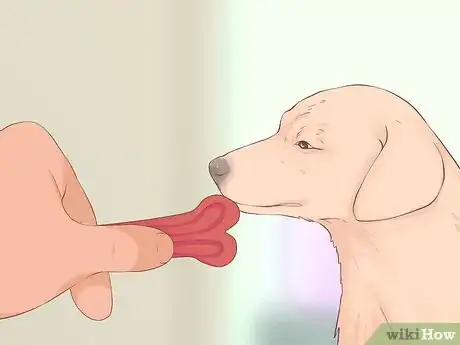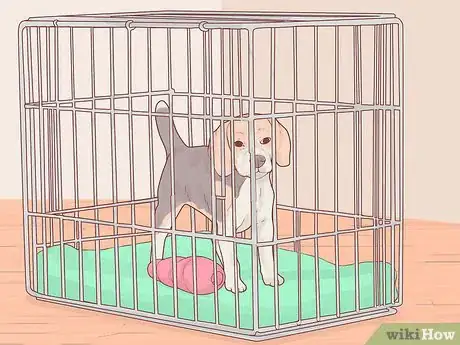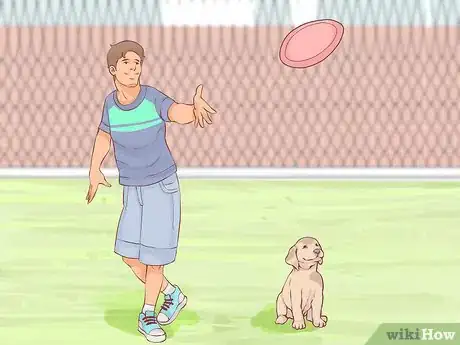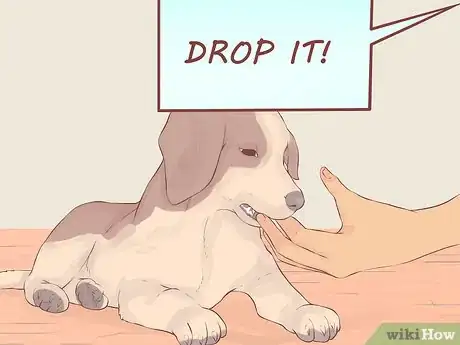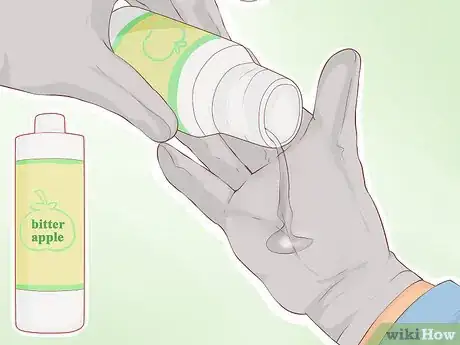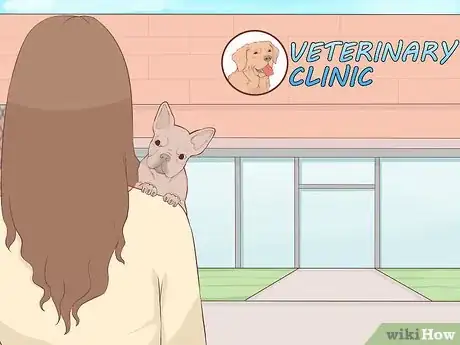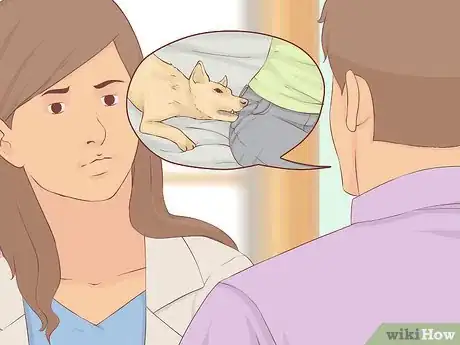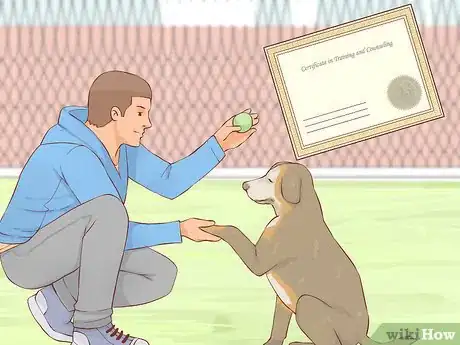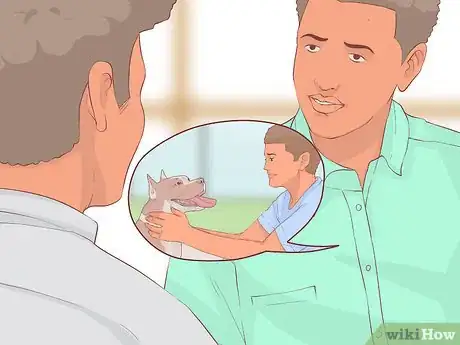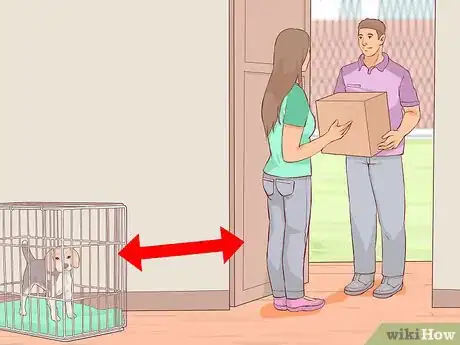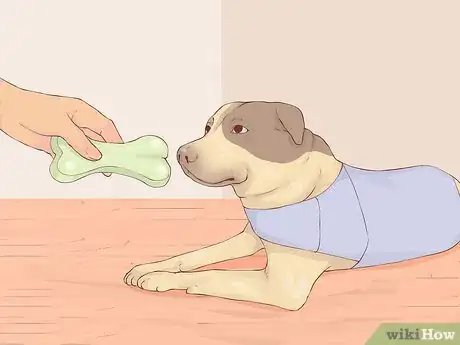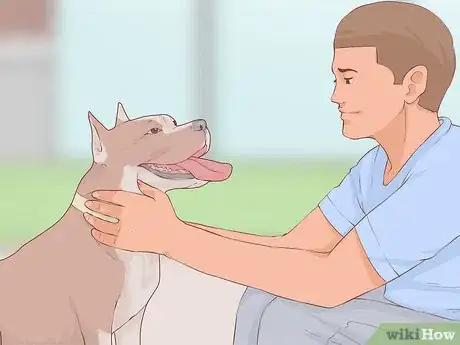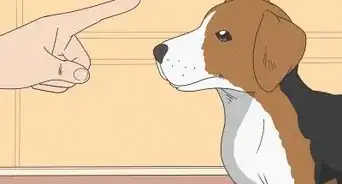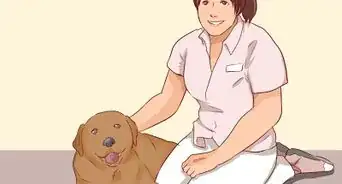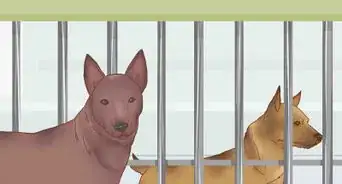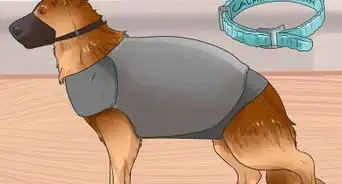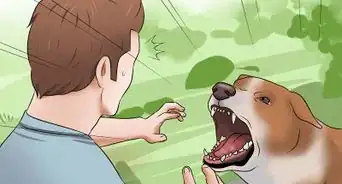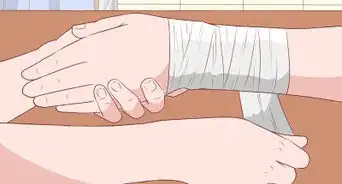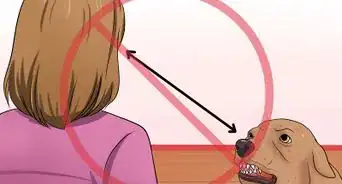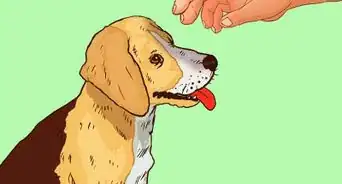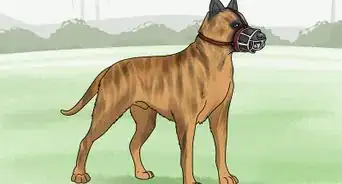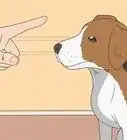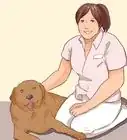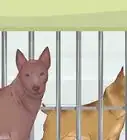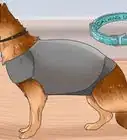This article was co-authored by Deanne Pawlisch, CVT, MA. Deanne Pawlisch is a Certified Veterinary Technician, who does corporate training for veterinary practices and has taught at the NAVTA-approved Veterinary Assistant Program at the Harper College in Illinois and in 2011 was elected to the board of the Veterinary Emergency and Critical Care Foundation. Deanne has been a Board Member of the Veterinary Emergency and Critical Care Foundation in San Antonio, Texas since 2011. She holds a BS in Anthropology from Loyola University and an MA in Anthropology from Northern Illinois University.
There are 10 references cited in this article, which can be found at the bottom of the page.
This article has been viewed 26,351 times.
Dog biting is a common problem, with about 15% of dog owners having been bitten by their dogs.[1] Puppies nip and bite as part of their social development.[2] If this biting behavior isn’t stopped, though, it will become dangerous and painful when the dog is an adult.[3] Handling a biting dog, whether it's a puppy or adult, takes time and patience. Try different strategies at home and work with your vet or professional behaviorist to properly handle your biting dog.
Steps
Correcting a Puppy’s Biting
-
1Ignore the bite. When puppies bite, it’s usually to get attention for playtime. A puppy will do this with its littermates and won’t see the problem with biting you, too. However, you will need to discourage this biting. Rather than saying ‘Ouch!’ when your puppy bites, simply ignore the bite.[4]
- If you say ‘ouch!’ or act like you’re hurt, your puppy may interpret that as attention.[5]
- Your attention is your puppy’s reward. If your puppy doesn’t get attention from the bite, it will not see the benefit in continuing that behavior.
-
2Give your puppy a toy. Biting and nipping helps a puppy learn how to control its jaws. You don’t want your puppy’s jaws on you, though! After acting like your puppy’s bite never happened, calmly get up and get your puppy a chew toy. This will redirect your puppy’s behavior toward something good.[6]
- Give your puppy some verbal praise and extra petting when it begins chewing on its toy. This will encourage your puppy to chew on the toy instead of your hand.
- Small rawhide bones are great chew toys for puppies. Keep an eye on your puppy so it doesn’t choke on the bone.[7]
- In general, your puppy should have a variety of toys to play with. The more toys your puppy has, the less likely it will be to nip or bite you.[8]
Advertisement -
3Put your puppy in ‘time out.’ When a puppy is really tired, it may start running around and biting everything it sees. If your puppy is doing this, put it in its crate (if you have crate trained it) with a long-lasting chew toy, like a Kong toy. After a few minutes, don’t be surprised if your puppy has fallen asleep.[9]
- Another ‘time out’ strategy is for you to get up and leave the room for 30 to 60 seconds. Then, come back and continue what you were doing with your puppy.[10]
- When you leave the room, do not come back until your puppy is calm.[11] This may take longer than 60 seconds.
- Leaving the room will take away your attention, meaning your puppy isn’t getting rewarded. When you come back, play with your puppy and reward good, non-biting behavior.
-
4Engage in play that doesn’t encourage biting. If you let your puppy nip and bite your hands during playtime, it won’t learn that it shouldn’t bite. Choose games that keep your hands away from your puppy’s mouth. For example, play fetch with your puppy.[12]
- If your puppy still tries to bite you, redirect its attention toward a chew toy and away from your hand.
-
5Teach your puppy to ‘drop it.’ If your puppy bites your hand, the ‘drop it’ command will teach your puppy to take your hand out of its mouth. After your puppy successfully follows the command, immediately reward it with verbal praise and its favorite chew toy.
-
6Make your hand undesirable. Your puppy will stop biting your hand if it doesn’t taste good. Put a bitter substance (like Bitter Apple) on a cotton glove and wear the glove when you’re around your puppy. Be aware, though, that your puppy may learn it’s the glove that tastes bad, not your hand.[13]
- You can find Bitter Apple at your local pet store.
Getting Help if Your Adult Dog Bites
-
1Take your dog to your vet. Puppy biting can usually be easily corrected. Correcting an adult dog’s biting, however, can be much harder. If you have an adult dog that’s biting, take it to your vet to rule out medical causes of biting. Painful conditions like arthritis can make a dog irritable and aggressive, causing biting.
- Adult dogs can also bite because they were not properly socialized as puppies. Without proper socialization, adult dogs are more fearful and more likely to bite because of that fear.[14] This fear biting is a form of aggression.
- If your vet determines that the biting is not due to a medical condition, then they will talk with you about changing your dog’s behavior to stop the biting.
-
2Discuss the biting problem with your vet. When you take your dog to your vet, you will need to have a detailed discussion about your dog’s biting problem.[15] The more information your vet has about the problem, the better they will be able to devise a treatment plan. Give the following details to your vet:
- History of any behavioral problems (destructive behavior, growling, not following commands)
- Situations when your dog is most likely to bite (seeing other dogs, guarding its toys or food bowl, meeting new people, being petted)
- Who your dog has bitten
-
3Work with a professional behaviorist. If your vet thinks your dog’s biting problem is complex, they may refer you to a board-certified veterinary behaviorist.[16] The behaviorist will take a closer look at your dog’s behavior to determine why it’s biting and come up with a plan to stop the biting.
- Choose someone (such as a board-certified veterinary behaviorist, a certified professional dog trainer, or an applied animal behaviorist) that has experience with aggression in dogs.[17] Your vet can recommend which type of professional to go to.
-
4Follow instructions. Handling an adult biting dog takes a lot of patience and consistency. The treatment plan prescribed by your vet or the behaviorist will involve a lot of work and will require you to follow all instructions carefully.[18] Make sure you understand what you are supposed to do and what your dog is supposed to do.
- Ask questions if any part of the treatment plan isn’t clear to you.
Working With Your Adult Dog
-
1Identify and avoid trigger situations. If you know when your dog is most likely to bite, then avoiding those situations will help you handle your dog’s biting.[19] For example, if your dog has bitten a professional groomer, then you’ll want to avoid that groomer and possibly do the grooming yourself.
- If your dog has bitten a delivery person, keep your dog away from the door when you are expecting a delivery.
-
2Decrease your dog’s fear. If your adult dog is fear biting, you will need decrease that fear. Decreasing fear involves processes called desensitization and counterconditioning. Desensitizing makes the fearful situation seem normal, while counterconditioning pairs the fearful situation with something positive (treats, toys).[20]
- Desensitization and counterconditioning take time and will vary according to what the fearful situation is. Your vet or professional behaviorist will develop an individualized plan to decrease your dog’s fear.
- With time, your dog will feel more confident and less likely to engage in fear biting.
-
3Use reward-based training. Handling an adult biting dog involves making positive behavioral changes. Training your dog to change its behavior will go more smoothly when you reward it with treats, verbal praise, and extra petting. When you reward positive behavior, you will reinforce that behavior and encourage your dog to behave well and not bite.[21]
- The rewards must be consistent. When your dog knows it will get a reward from you each time it behaves well, it will make the positive behavior changes more consistently and be less likely to bite.
Warnings
- A dog that has bitten once can rarely be ‘cured’ of biting again. If your dog has already bitten someone or another dog, be proactive about correcting the biting behavior.[24]⧼thumbs_response⧽
- Working with an aggressive dog is dangerous and should only be done under the supervision of someone who is trained to handle this type of behavior.⧼thumbs_response⧽
References
- ↑ https://vcahospitals.com/know-your-pet/dog-behavior-problems-aggression-to-family-members-introduction-and-safety
- ↑ http://yourdogsfriend.org/help/biting-nipping/
- ↑ http://www.canismajor.com/dog/bite3.html
- ↑ http://www.doggonesafe.com/teach_puppy_not_to_bite
- ↑ http://yourdogsfriend.org/help/biting-nipping/
- ↑ http://www.doggonesafe.com/teach_puppy_not_to_bite
- ↑ https://www.paws.org/library/dogs/puppies/nipping-and-rough-play/
- ↑ http://www.aspca.org/pet-care/dog-care/common-dog-behavior-issues/mouthing-nipping-and-play-biting-adult-dogs
- ↑ http://yourdogsfriend.org/help/biting-nipping/
- ↑ http://www.aspca.org/pet-care/dog-care/common-dog-behavior-issues/mouthing-nipping-and-biting-puppies
- ↑ https://www.paws.org/library/dogs/puppies/nipping-and-rough-play/
- ↑ http://www.aspca.org/pet-care/dog-care/common-dog-behavior-issues/mouthing-nipping-and-biting-puppies
- ↑ https://www.paws.org/library/dogs/puppies/nipping-and-rough-play/
- ↑ https://drsophiayin.com/blog/entry/help-my-dog-bites-how-to-deal-with-dogs-who-bite/
- ↑ https://vcahospitals.com/know-your-pet/dog-behavior-problems-aggression-to-family-members-introduction-and-safety
- ↑ https://vcahospitals.com/know-your-pet/dog-behavior-problems-aggression-to-family-members-introduction-and-safety
- ↑ http://www.aspca.org/pet-care/general-pet-care/behavioral-help-your-pet
- ↑ http://www.canismajor.com/dog/bite3.html
- ↑ http://www.humanesociety.org/animals/dogs/tips/prevent_dog_bites.html
- ↑ https://drsophiayin.com/blog/entry/help-my-dog-bites-how-to-deal-with-dogs-who-bite/
- ↑ https://vcahospitals.com/know-your-pet/dog-behavior-problems-aggression-to-family-members-introduction-and-safety
- ↑ http://yourdogsfriend.org/help/biting-nipping/
- ↑ http://www.humanesociety.org/animals/dogs/tips/prevent_dog_bites.html
- ↑ https://vcahospitals.com/know-your-pet/dog-behavior-problems-aggression-to-family-members-introduction-and-safety
About This Article
To handle a biting dog, take it to your vet to determine why it's biting, since it could be caused by a medical issue. For example, arthritis can make a dog irritable and cause it to bite. If it's a puppy, consider ignoring the biting, since it will interpret any reaction as attention, which will encourage it to bite again. Instead of crying “ouch,” give your puppy a toy so it has something to bite. Otherwise, if your adult dog is biting, reward positive behavior with petting or treats so it learns how it should act. You should also avoid letting it get into trigger situations, such as stopping it from going to the door when someone visits your home. Once you've tried these steps, consider engaging a professional behaviorist if your dog continues to bite. For tips from our Veterinary co-author on how to follow a treatment plan for your biting dog, read on!
